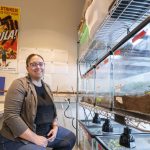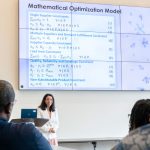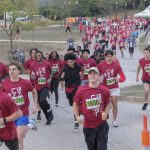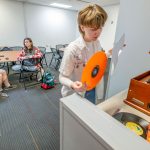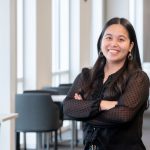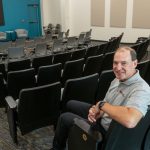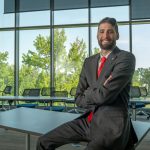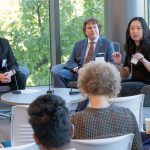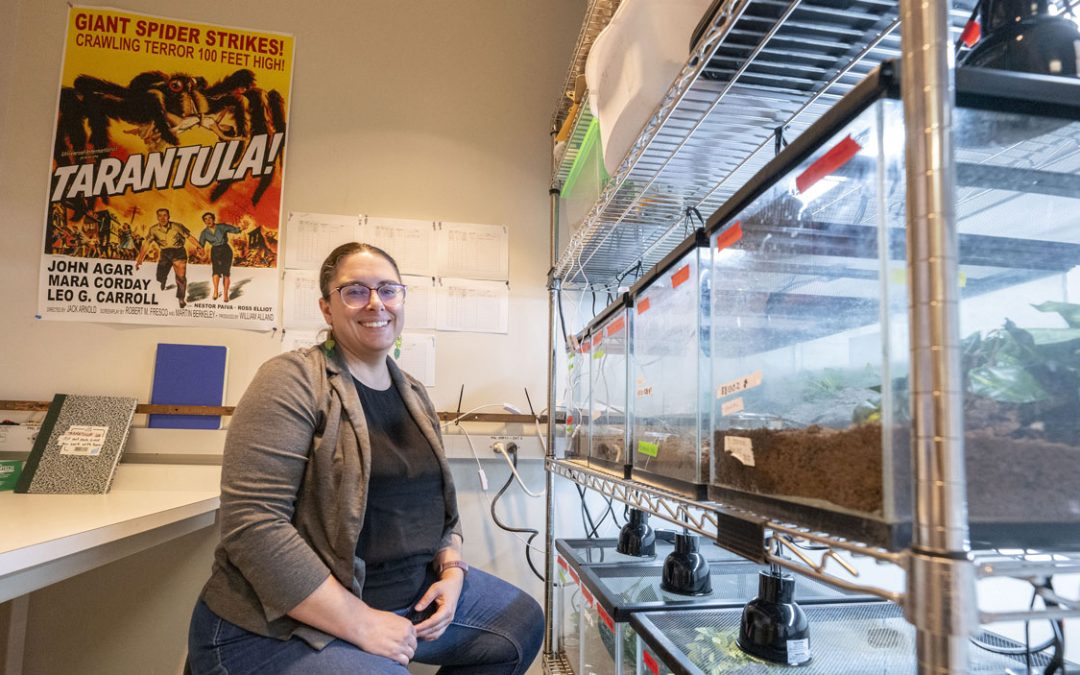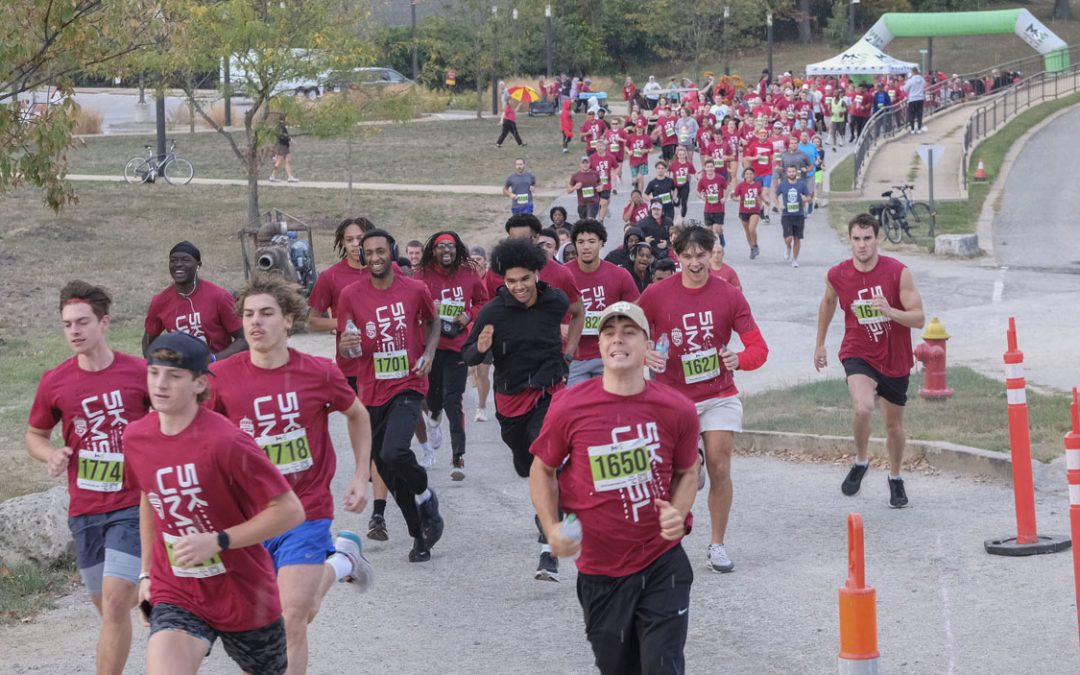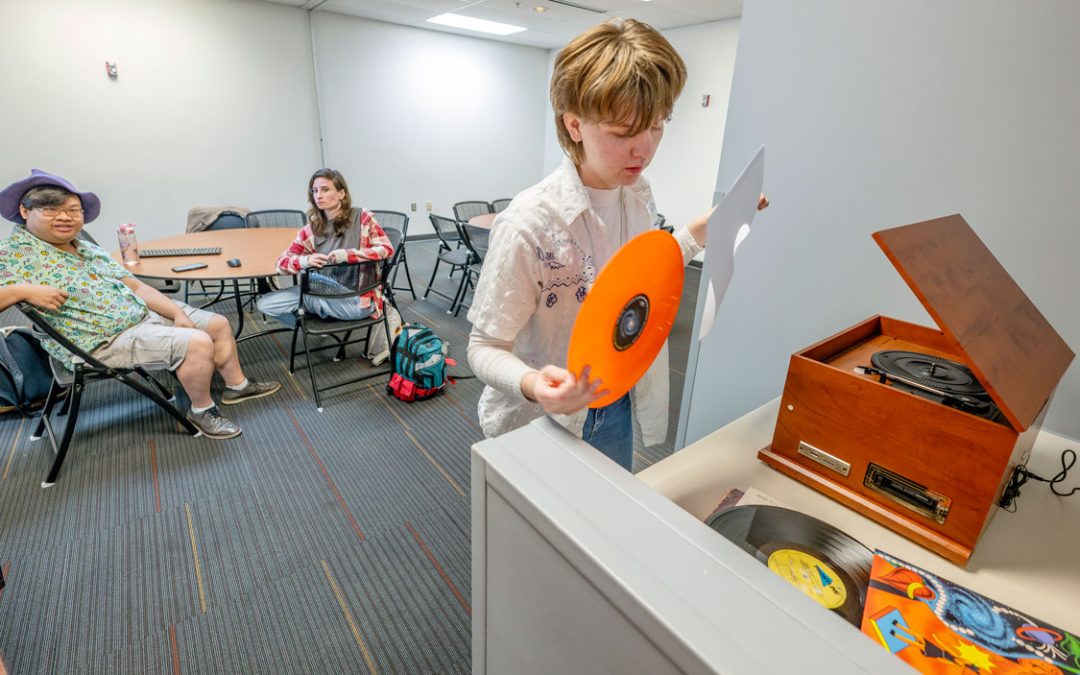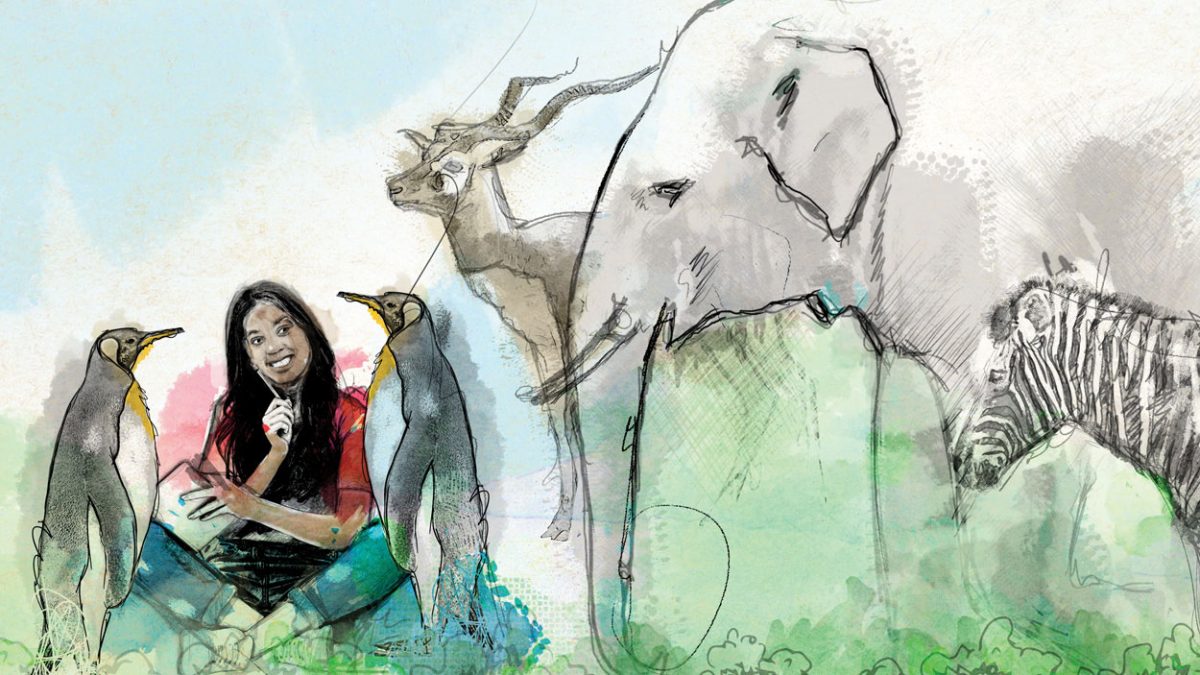
Through the co-design process facilitated by UMSL’s Community Innovation and Action Center, local teens were encouraged to brainstorm ideas for youth programming at the upcoming WildCare Park. (Illustrations by Marty Baragiola)
When Akshaya Boopathi’s mom told her about the opportunity to work on a project with the Saint Louis Zoo, she was immediately in. A lifelong animal-lover, the 13-year-old imagined she might be able to help decide what animals to bring to the zoo and jumped at the chance.
That wasn’t exactly what Boopathi, an eighth grader at Southwest Middle School, ended up doing over the course of three months earlier this year, but she’s still walking away from the experience feeling energized and excited.
Boopathi teamed up with two dozen other middle school and high school students from across the St. Louis region to develop ideas for youth educational programming they’d like to see at Saint Louis Zoo WildCare Park, the zoo’s new world-class safari park and conservation center slated to open on 425 acres in north St. Louis County in 2027.
Through a unique co-design process facilitated by the Community Innovation and Action Center at the University of Missouri–St. Louis, the group of 25 students, ranging in ages from 13 to 18, worked together to brainstorm and workshop ideas. Over just four sessions between April and June, they developed three distinct possible youth programs to offer at the park: Digital Habitats, Nature Race and STEM Animal Tracks.
“I was very impressed with the speed in which they were able to come up with three distinct, polished, well-thought- out ideas that anybody at any age group would be interested in,” says Rachel Goldmeier, outreach coordinator at CIAC. “They came together, worked as a group and did a magnificent job – each team.”
Within the next 10 years, WildCare Park is expected to generate over $660 million in economic activity across the St. Louis region. In order to more deeply connect the park to surrounding communities, zoo officials decided to not just create a youth program, but to give community members a say in what the program might look like.
“We understand the need to make sure that their voices are heard,” says Jaclyn C. Johnson, the zoo’s assistant director of education. “We don’t want to do cookie-cutter programming, taking what we’ve already done at the main campus and then just applying it at WildCare Park. Knowing that all communities are different, we want to build upon the things that they really want and desire and not just what we think that they want to be involved in.”
To deliver on that goal, the zoo tapped CIAC to help create a co-design process to source ideas from students from across St. Louis. A collaborative approach, co-design is a way to ensure that all voices are heard when designing different products or services by actively involving the people who will use them.
Community engagement is a major focus of CIAC, which seeks to develop knowledge, connections and tools to advance equity across the St. Louis region. The organization was a natural partner to facilitate the co-design process, which was also supported by faculty and staff from the University of Missouri Extension Community Development and Youth Engagement team, including Community Development Specialist Dwayne T. James, 4-H Youth Development Specialist Melissa Scheer and 4-H Youth Program Associate Drachen Koester.
“One thing that we really try to do at CIAC is center community voice and priorities and focus on equity,” says Sara Mohamed, CIAC’s equity and engagement lead. “We have a lot of projects in which we are engaging either directly with community members or we’re engaging with partners that work with community. This project is kind of a mishmash of those two, because we are engaging directly with community, but we’re also engaging with our partners who do that direct work with community members. It’s something that we really value and is central to our mission.”
There is excitement building about each of the programs to come out of the co-design process. An on-site class offered over eight sessions during the summer, the Digital Habitats program would offer an immersive learning experience in which students could learn about animal habitats both virtually and physically. The program would combine hands- on experiences with WildCare Park staff – think exploring biofacts such as skulls, antlers and pelts or shadowing zookeepers as they feed animals and clean their habitats – with virtual reality experiences that would allow teens to explore habitats they can’t see in person at WildCare Park.
“A lot of the program involves shadowing because we want them to be able to see how the zoo care workers work and then also learn about why these animals are endangered and how you can help them,” says Angela Mahianyu, a rising ninth grader at Westminster Christian Academy who worked on the Digital Habitats team.
Inspired by The Amazing Race, the Nature Race program would feature a competitive race and overnight stay in which teens would research animals and participate in hands-on activities such as a scavenger hunt, building bird feeders and more. In doing so, they’d learn about native wildlife, conservation work at WildCare Park and ways to help protect the environment.
As a member of the Nature Race team, Boopathi drew on both her own love of nature and her experience at sixth grade camp to help come up with fun activities that would keep kids engaged. She enjoyed getting to meet students from across St. Louis through the program, which she thinks could have a tangible impact on conservation efforts.
“I think it’s important because many animals are going extinct, and many people are polluting and littering outside, which can hurt the animals,” she says. “For generations to come, I think people should be able to see all these animals, like elephants – I heard they’re going extinct soon, and there’s not many of them left. There are so many other animals that we haven’t seen yet – like out in nature – so I think it’s great that the zoo can bring in more animals so more people can learn about the environment and how we should really take care of it. Nature’s just beautiful.”
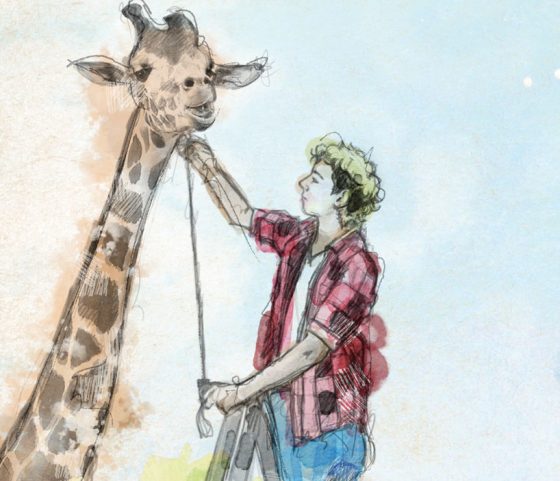
The third program, STEM Animal Tracks, would be a semester-long program designed to teach teens about STEM and how these subjects can be used to help the zoo and its animals. Youth would be able to participate in hands-on activities, such as habitat restoration and other conservation projects, and also receive mentorship and job shadowing experiences from zoo professionals.
Nevaeh Neal, a senior at Hazelwood Central High School and a member of the STEM Animal Tracks team, enjoyed bouncing ideas off fellow students from across St. Louis and getting their perspectives. Growing up in Florissant, Missouri, she’s always found it important to get involved and be a pillar in the community. She appreciated the zoo’s efforts to involve the community – specifically local teens – in the project and empower them to share their ideas.
“I think it’s important to make sure this is something that is serving the people who live there and also the people that I love and the people who are going to come to our community and have an opinion about it,” she says. “I thought it was really cool how community-oriented [the co-design process] was and how youth-focused it was. It was really based on what we wanted and what our opinions were and how we wanted the zoo to benefit us as young people who live in that community. I thought that was really helpful and also the push that we had to think bigger. It gave us the confidence that our ideas mattered and that they could be brought to life.”
After presenting their ideas and receiving feedback at a community showcase in mid-June, students met with the co-design team one last time in early July to reflect on their experiences through the program and determine what feedback could be implemented in the park’s eventual programming. The zoo team anticipates that elements from each of the proposed programs will be piloted. They’ve already begun investigating ways to implement VR technology experiences for guests, for instance, and are currently working on next steps.
In addition to developing actionable ideas for the programming at WildCare Park, the zoo team is hoping that the co-design process facilitated by CIAC can serve as a model when developing future programming back at the zoo in Forest Park.
“We’re hopeful this approach of designing programming together with communities is the future of conservation education for the Saint Louis Zoo,” says Amy Niedbalski, the zoo’s director of conservation, audience research and evaluation.
“We know that not every single program that we develop will go through this process, but we all know that this is a best practice, and we’re trying to make this part of our culture as the Conservation Education Department,” Johnson adds. “We know co-design is a good model and using it for WildCare Park is setting the stage. We’re all learning this process together, and that’s helping us become better educators.”
As CIAC continues to engage with community partners through the St. Louis area, it is also taking lessons from the experience, which it hopes to implement in new co-design models in the future.
“We’ve been really excited to be a part of this and also to see what kind of future collaborations that this could inspire as well,” Goldmeier says. “Being able to see these different groups come together to build programming as a unit and watching that collaboration – how quickly it’s come together – it’s really just a source of pride in what we’ve been able to build as two teams working on something of great importance for the St. Louis community.”
This story was originally published in the fall 2024 issue of UMSL Magazine. If you have a story idea for UMSL Magazine, email magazine@umsl.edu.


